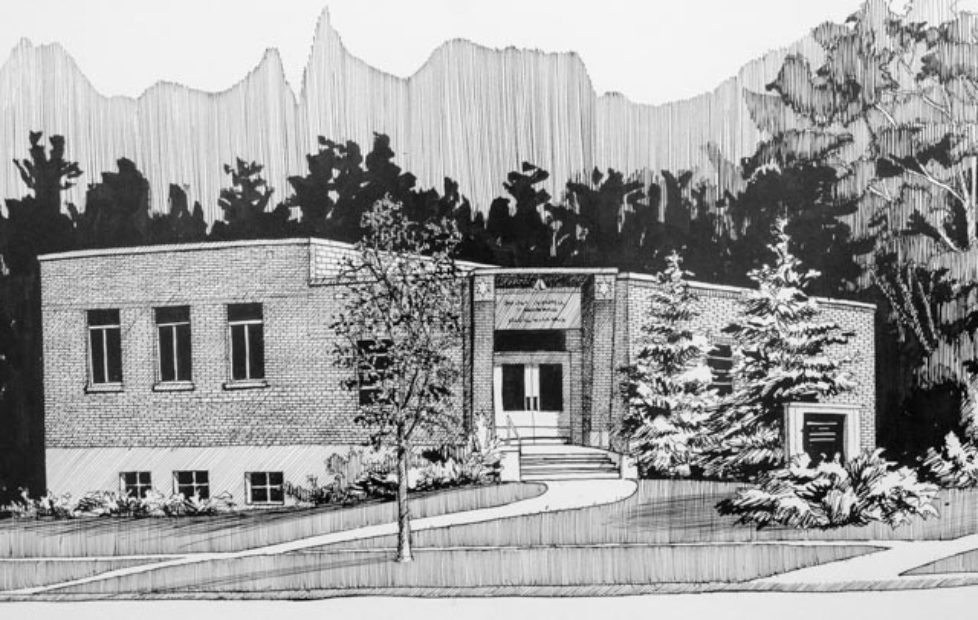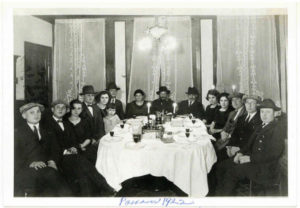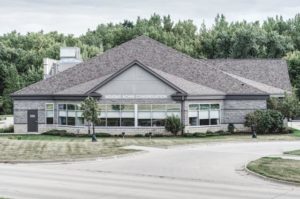
1833: Jewish history begins in Iowa when Alexander Levi settled in Dubuque.
1857: Moses Bloom, who had left Alsace in 1850, settles in Iowa City and opens a clothing store. The railroad had just arrived in Iowa City, promoting the town, briefly, to a major railhead for travelers going west by the overland route.
1859: The United States Hebrew Association of Iowa City is founded for the purpose of establishing the cemetery that currently serves congregation Agudas Achim.
1873: Moses Bloom is elected mayor of Iowa City—becoming the first Jewish mayor of any city in the United States.
1904: Mary Grove Chawner was hired by the University of Iowa as an instructor in the English department. She was probably the first Jewish faculty member at the University.
1911: Joseph Braverman comes to Iowa City to teach in the newly established Talmud Torah run by the Iowa City Hebrew School Association. With the arrival of a new wave of Russian immigrants—many arriving via the Baron de Hirch’s Galveston plan—the character of Iowa City’s Jewish community changed from being dominated by relatively assimilated German Reform Jews to being dominated by Orthodox Russian immigrants.
1912: The Jewish Ladies’ Relief Organization is founded. This organization would eventually be absorbed by the Agudas Achim Sisterhood.
1913: Dr. Benjamin Kramer arrives in town as a physiology instructor at the University. He went on to a distinguished career as a pediatric physiologist, but during his 6 year stay in Iowa City, he was heavily involved in the Jewish community—helping found a “night school for aliens” in 1914, the Iowa City Zionist Organization in 1915, and the Iowa Chapter of the Intercollegiate Menorah Society in 1916.
1916: Articles of incorporation are filed on behalf of Agudas Achim for the purpose of maintaining “a church for worship by people of the Hebrew race and religious faith.” Prior to this, the congregation met in members’ homes for services.
1920: Agudas Achim purchases a house at 432 South Clinton Street, across from the county courthouse, to serve as a synagogue. This building would serve the congregation until 1951. In the same year, the United Palestine Appeal of Iowa City was founded and the Alpha Beta chapter of Phi Epsilon Phi was founded as the first Jewish fraternity on campus.
1921: Agudas Achim

repurchases the old Jewish cemetery. Why the cemetery was sold remains one of the most mysterious episodes in the history of Iowa City’s Jewish community, but it appears that most of the first wave of
German Jewish families left town as the new wave of Russians arrived, and when they left, they dug up the graves, sold the cemetery and took the bodies with them.
1926: The Hillel Club at the University of Iowa is founded.
1926: The School of Religion at the University of Iowa is opened, with Dr. Maurice Farbridge as Jewish Chair.
1929: Moses Jung came to campus as Hillel director and Jewish Chair in the School of Religion.
1932: The Agudas Achim Sisterhood is founded. 1939: Rabbi Morris Kertzer was hired by the School of Religion to replace Moses Jung. Kertzer, a graduate of JTS, was a dynamic leader who was rapidly embraced by the local community as “our rabbi.” Rabbi Kertzer renamed the Philo Club back to the Hillel Club and in 1940 established formal ties with the national B’nai B’rith Hillel Foundation. He was also widely accepted in the larger community, serving as chair of the Iowa City Interfaith Council in 1942.
1943: Rabbi Kertzer leaves to serve as an army chaplain. He held Passover services at the besieged Anzio beachhead, reopened synagogues in Rome and Marseilles, and was active in helping Jewish refugees on the road to Israel. During the two years he was away, Rabbi Gilbert Klapperman filled his position at Iowa. Klapperman would go on to a position of leadership in the Modern Orthodox movement.
1945: The B’nai B’rith Hillel Foundation of Iowa City is incorporated, for the purpose of building a permanent Jewish student center on campus. Up to this point, rented quarters and university facilities had been used for all Hillel (and Philo) activities.
1946: Rabbi Judah Goldin replaced Rabbi Kertzer as Professor of Religion and Hillel Director; as with his predecessors, he served as de-facto rabbi to Agudas Achim.
1950: Agudas Achim moves into a new cinderblock and brick building at 602 East Washington Street. The building was torn down after being sold and is now an apartment building.
1952: Fredrick Bargebuhr replaced Rabbi Golden at the School of Religion.
1957: Rabbi Ben Zion Gold, a JTS grad, comes to Iowa City as interim Hillel director. During the late 1950’s, Agudas Achim formally affiliated itself with the Conservative movement. Prior to this, up through at least the early 1950’s, it had been nominally Orthodox, although unaffiliated.
1958: Rabbi Sanker arrives to serve jointly as rabbi of Agudas Achim and as director of Hillel. This joint arrangement served Hillel and Agudas Achim into the 1980’s.
1960: Rabbi Sheldon Edwards replaces Rabbi Sanker.
1964: Rabbi Samuel Lehrer replaces Sheldon Edwards, only to be replaced himself in 1968 by Rabbi Leroy Diamond. Plans for a new Hillel house, built in 1970, were developed under Rabbis Lehrer and Diamond.
1971: Rabbi Roy Abramovitz replaces Rabbi Diamond as Hillel Director and congregational rabbi. Rabbi Abramovitz left after only a short stay.
1971: Rabbi Jeff Portman, a graduate of Hebrew Union College, comes to town and stayed, putting an end to the instability of the 1960’s when it seemed that Agudas Achim and Hillel could not retain a rabbi for more than a few years.
1974: Agudas Achim becomes an egalitarian congregation, counting women towards a minyan for the first time. Surprisingly, those who remember this change remember it as being unremarkable.
1975: With ever shrinking membership, the national B’nai B’rith foundation cuts off funds to the University of Iowa School of Religion’s Jewish Chair. B’nai B’rith funding for this chair had been established under Rabbi Kertzer when it was expected that the chair would serve as Hillel director. Within a few years, B’nai B’rith finances would reach the point where they could no longer afford to fund the Iowa Hillel program.
1994: Hillel hires a full-time director, Elliot Zashin, allowing Rabbi Portman to become the first full-time rabbi to serve Agudas Achim.
1996: Leah Girnun becomes the Hillel director.
1999: Jerry Sorokin becomes Hillel director and has remained as its director. The synagogue no longer has enough room for its school and moves part of its classes to Hillel. In 2010 the entire Sunday program is moved to a local private school.
2012: The synagogue facility suffers water damage and mold and can no longer house all of its activities. The former Gold’s Gym in Coralville is purchased by Agudas Achim and following the sale of its facility in Iowa City, work begins on remodeling the former gym.

2013: Agudas Achim has its first Shabbat service in its new facility on March 8-9. A gala event is held in April and the president of the URJ, Rabbi Rick Jacobs is the keynote speaker. Local political officials and several clergy attend.
2013: Dedication of Dorfman Pavilion in cemetery.

